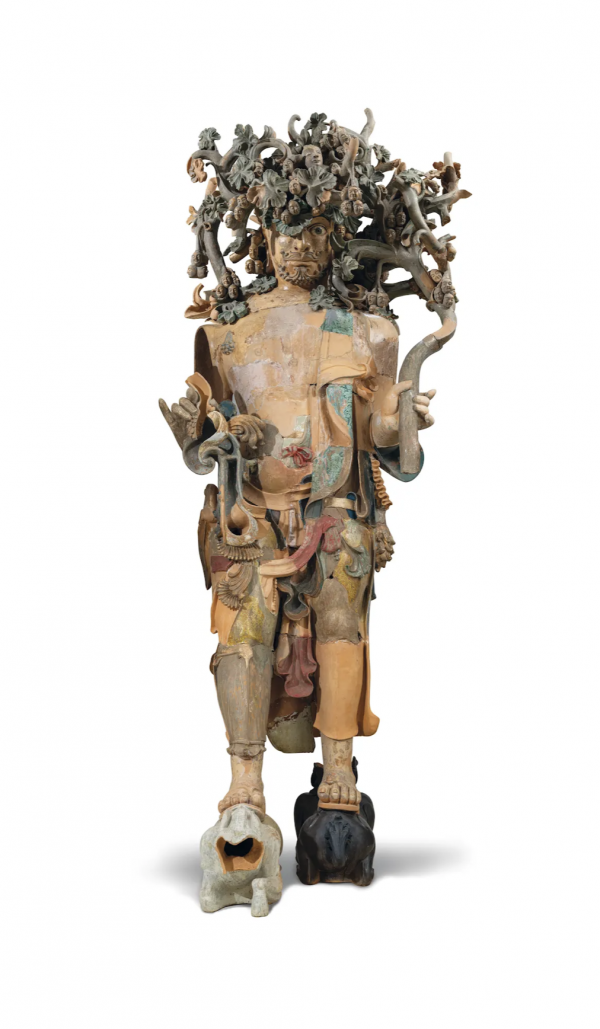
 May 19, 2024
May 19, 2024
 Unframed is supported in part by LACMA's Director's Circle.
Unframed is supported in part by LACMA's Director's Circle.

 May 19, 2024
May 19, 2024
 Unframed is supported in part by LACMA's Director's Circle.
Unframed is supported in part by LACMA's Director's Circle.

Manjunath Kamath, Vikatonarva, 2024, Los Angeles County Museum of Art, gift of Kelvin and Hana Davis through the 2024 Collectors Committee, © Manjunath Kamath, photo courtesy Gallery Espace Art Pvt. Ltd., photo © Museum Associates/LACMA
Manjunath Kamath assembles iconography inspired by cultures across history into sculptures. Characters from Indian epic poems come together with motifs from Classical Greek architecture and Tang-dynasty China. Kamath does not reference any drawings when he works. He starts with a lump of clay and builds three dimensional forms from his imagination.
“You see the sky,” Kamath said. “It’s endless. There are no boundaries for it. Similarly in my work, viewers look to identify an image, or the era, but they can’t find exactly what it is. Artworks have layers of meanings which can be infinitely peeled.”
Vikatonarva is a 12-foot-tall terracotta sculpture. Latin for “baked earth,” terracotta is the most common sculptural material around the world. Artists from Greece to Iran, China, and the Americas have worked in clay. The oldest terracotta figurines excavated from present day India date from the 7th millennium BCE.
Kamath discovered terracotta as a boy—he passed a potter’s yard as he walked to school and watched as the artist pinched and coiled mounds of earth. There were no museums in Mangalore where Kamath grew up. Instead, he learned art history in temples and churches. He saw gods with thousands of hands. He saw towering terracotta animals. Despite not knowing what these icons meant, they stirred his imagination.

Vikatonarva depicts a man wearing a headdress composed of branches and faces stepping toward the viewer. His stoic gaze recalls the terracotta warriors who protect the tomb of the first emperor of China. His right hand resembles the shape of a Karana mudra, a hand gesture believed to ward off evil in Buddhism. Vikatonarva may reference the Sanskrit word vikata, which means “monstrous,” or anarva for “boundless.” Kamath said he invented the name.
Artists traditionally carve giant icons to inspire viewers’ belief in an idea, nation, or deity. Kamath constructed a fictional character. He improvised its motifs. The viewer may feel they recognize Kamath’s sources, but they cannot quite identify them.
Rather than finding the meaning of an artwork from a singular reference, Kamath’s work opens limitless possibilities. In this, Kamath conveys the concept of infinity—an idea deeply embedded in Indian culture where the theorization of “emptiness” and “void” laid the groundwork for the mathematical adoption of the number zero in the 5th century CE.
During our 38th annual Collectors Committee Weekend (April 27–28, 2024), members of LACMA's Collectors Committee generously helped the museum acquire 10 works of art spanning a breadth of eras and cultures. Read more about all the acquisitions.